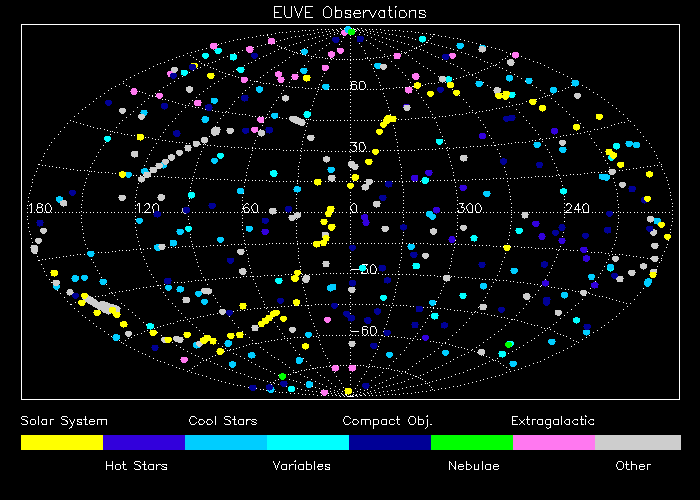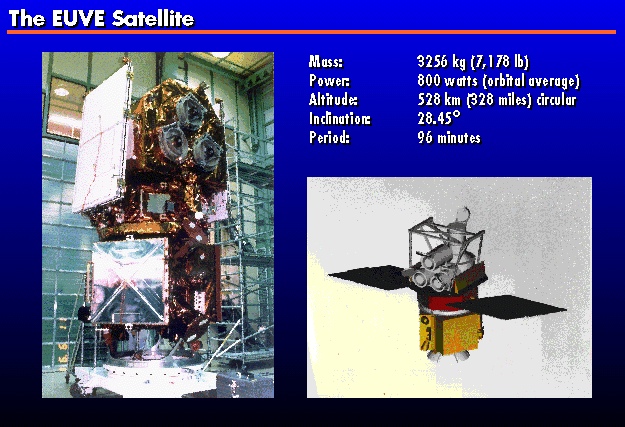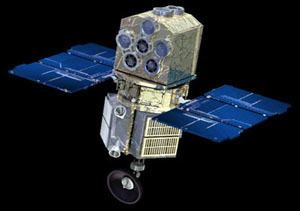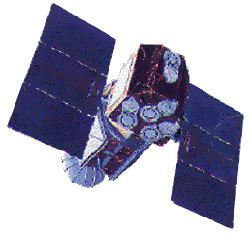Names Explorer 67 SATCAT no. 21987 Launch date 7 June 1992 Inclination 28.4° Rocket Delta II | COSPAR ID 1992-031A Website ssl.berkeley.edu/euve Inclination 28.4° Period 1.6 hours | |
 | ||
Similar International Ultraviolet Explorer, ROSAT, Far Ultraviolet Spectrosc, EXOSAT, Uhuru | ||
The Extreme Ultraviolet Explorer (EUVE) was a space telescope for ultraviolet astronomy, launched on June 7, 1992. With instruments for ultraviolet (UV) radiation between wavelengths of 7 and 76 nm, the EUVE was the first satellite mission especially for the short-wave ultraviolet range. The satellite compiled an all-sky survey of 801 astronomical targets before being decommissioned on January 31, 2001. It re-entered the atmosphere on January 30, 2002.
Contents

Mission goals

The goals of the mission included several different areas of observation using the extreme ultraviolet (EUV) range of frequencies:

Payload instruments
NASA describe these:


References
Extreme Ultraviolet Explorer Wikipedia(Text) CC BY-SA
